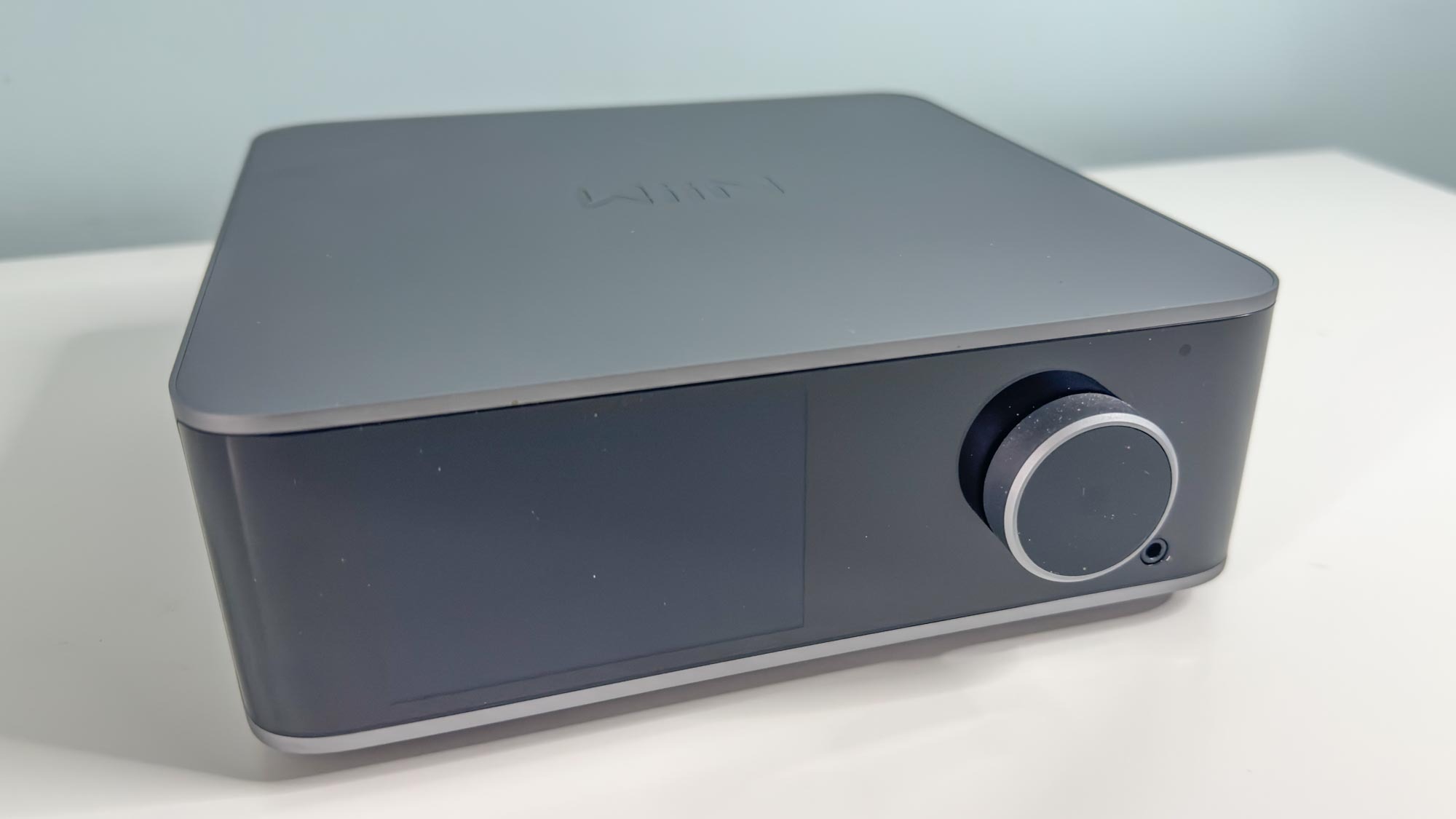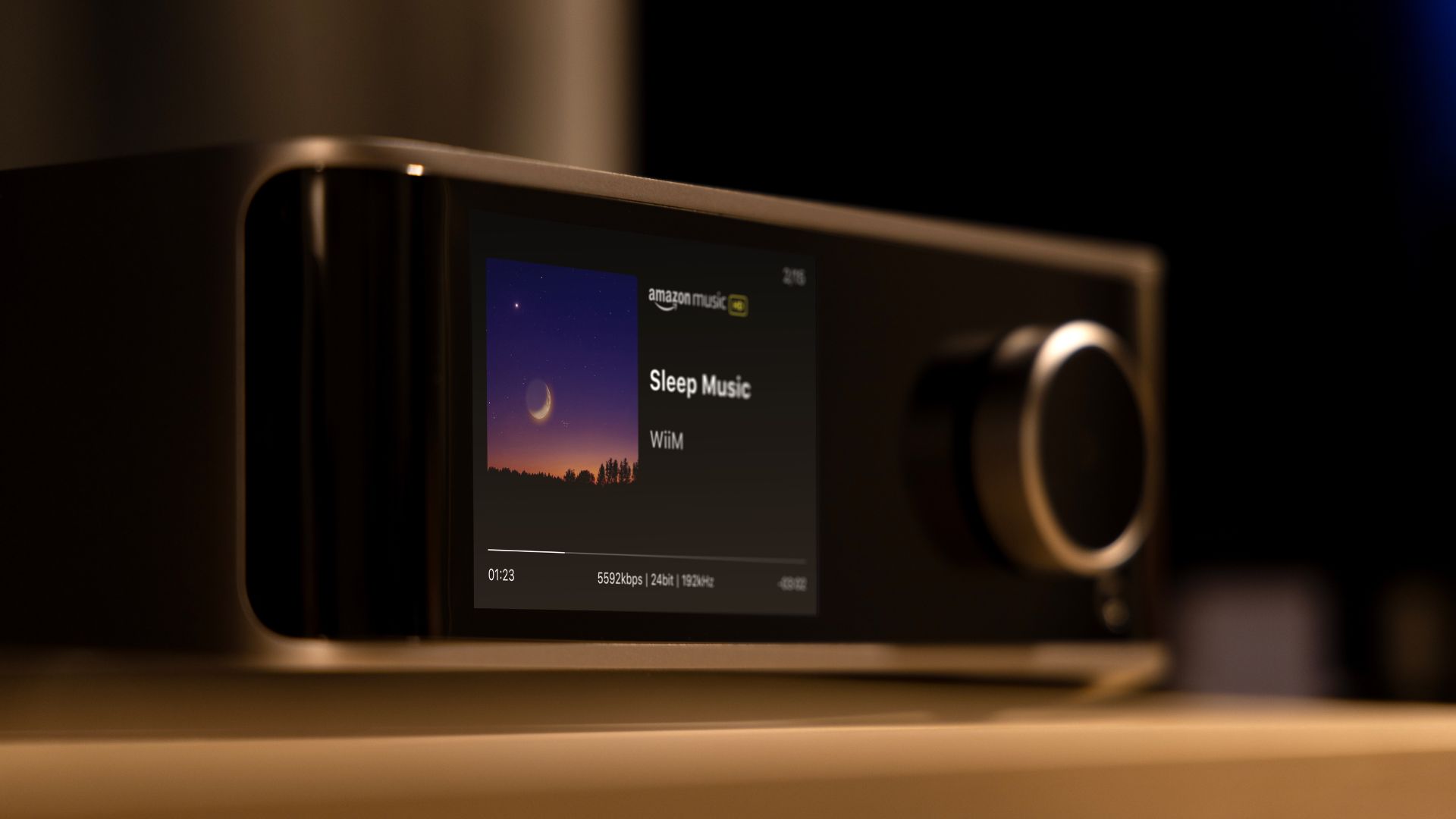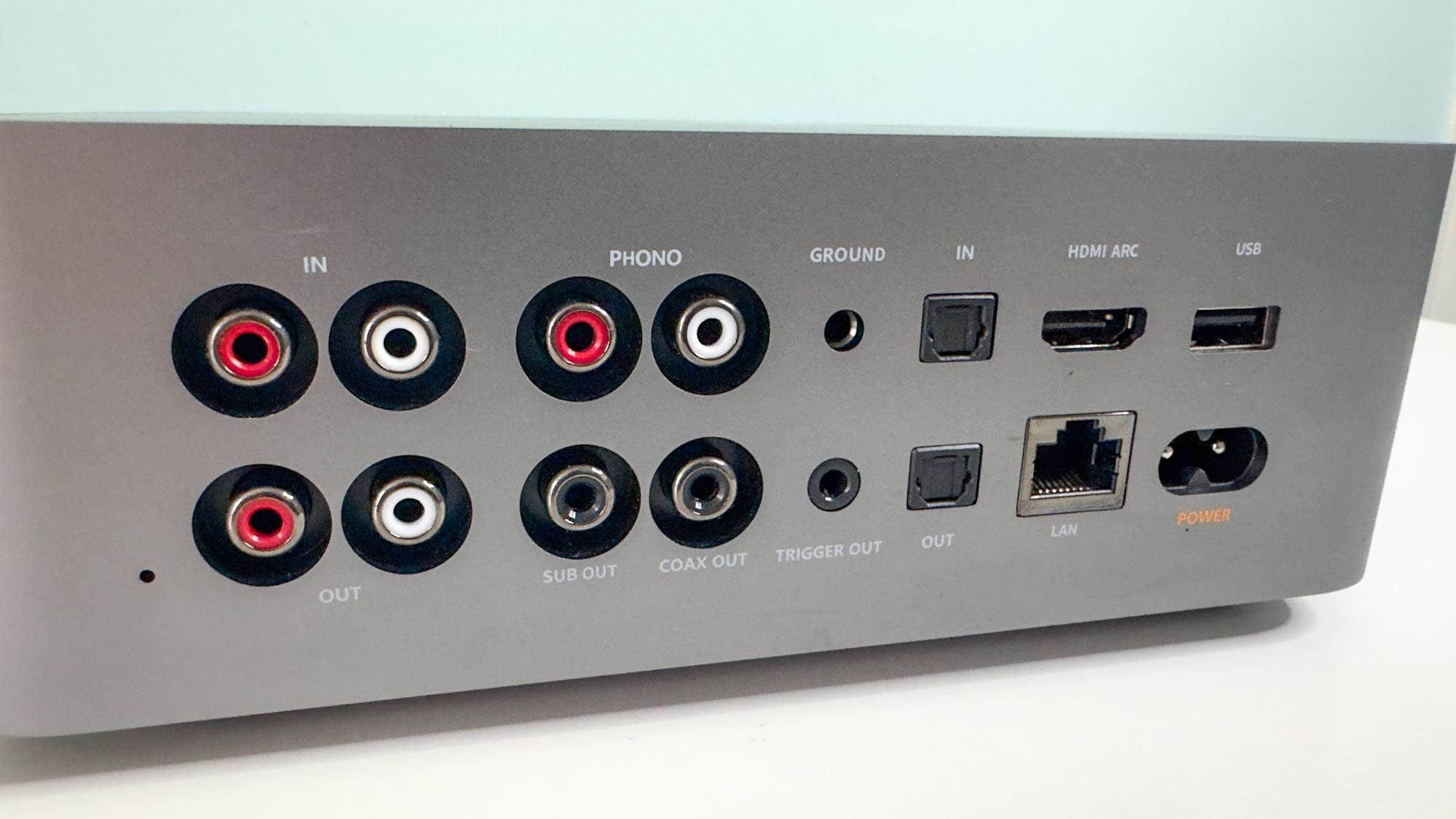This music streamer just became the centerpiece of my home HiFi
A seriously cool piece of kit

I’m lucky enough to get to try some extremely impressive pieces of audio gear thanks to my job. Be that some mad wired headphones milled out of aluminum, brass, and steel, to some desk speakers that somehow manage a better job at spacialising 3D audio better than even the best smart speakers, my experience with sound gear is something I still struggle to comprehend myself.
That does mean that the sound equipment I use in my everyday life, which helps me relax, leads me through reading sessions, and guides my critical listening time, has to either be really good, or really special — and I’ve found a great piece of budget HiFi gear that’s become an incredibly important part of my own setup.
This is the Wiim Ultra, a $349 box of tricks that hooks up to my existing HiFi system and lets me stream music from a range of different inputs. It looks cool, works great, and costs a whole lot less than the competition — but just why is it so important to me?
What is it?

Before that though, I should probably talk you through the Wiim Ultra, and why you might actually want one. It all stems from online music streaming, and the best way to get the highest resolution music to come out of a pair of speakers. Sure, a Sonos Era 300 supports hi-res music streaming and sounds pretty excellent, but it won’t hold a candle to the sound that a dedicated HiFi rig can pump out.
The issue is how you get the hi-res streaming to your home HIFi. Bluetooth adapters are fine, but you’ll be restricted in bitrate due to the limitations of the Bluetooth connection. You could have a cable that plugs directly into the best smartphone, but then the internal audio circuitry of the phone will hold back some of the best bits of the music from reaching the speakers. Enter, then, the streaming separate.
Generally, the more you spend, the better the music is going to sound.
The streaming separate plugs into your powered HiFi speakers or HiFi amplifier (which, in turn, is connected to some passive speakers), and connects to the internet. From there, you can stream music over a connection protocol like Tidal Connect, or even Roon, and get the very best audio quality possible, without having to pop a CD in a disc tray or a record on one of the best turntables. You can do it, in fact, from anywhere in your house, as long as you’re connected to the same WiFi connection as the streamer, and some even join other devices in smart home setups.
There are loads of streaming separate options out there, anywhere from really expensive models from dedicated HiFi manufacturers like Naim, all the way to more budget options like Eve. There are a couple of different things you’ll want to think about when you choose one, from the price to the internals of the device — after all, that will directly affect the music that’s being pulled from the internet and put through your speakers.
Sign up to get the BEST of Tom's Guide direct to your inbox.
Get instant access to breaking news, the hottest reviews, great deals and helpful tips.
Generally, the more you spend, the better the music is going to sound. That’s down to a number of different factors — but the DAC, or digital-to-analog converter, is going to be the biggest agent in making a sonic difference. After all, there needs to be something that takes the digital music signal from the internet and makes it into a listenable analog signal that your speakers, and by extension your ears, can understand. Without it, you’d just get a noise, and unless you like the audio equivalent of a chainsaw screaming at you, you’re probably not going to enjoy it.
The Wiim Ultra bucks the trend. It packs in a class-leading DAC and a whole bunch of other functions into a very compact and stylish box that costs a whole lot less than the competition. And I love it.
My new favorite thing

The Wiim Ultra has become a new, permanent fixture within my hifi for a number of reasons, and not just because its DAC is capable of processing some epic-sounding music. I love the way it looks for a start, with a slick, aluminum shell and spinning volume dial (perfect if you’re using it with powered speakers — set the speaker volume on the speakers, and then use the Ultra’s dial to get the level exactly where you want it), although I do wish the play triangle remained static and the dial span around it. No one likes a wonky play symbol.
I also really like the way that it works — plug all the bits in, the power cord, your inputs and outputs, open up the Wiim app, input your wifi details, and everything just magically… works. It appears in Tidal Connect once it’s hooked up to the internet, so you can stream to it without using the app, although the app is so good and loaded with options that you’ll want to do it that way.
You log into all your various music streaming services, and then tell the Wiim Ultra what you want to listen to by searching through all of them at the same time. Is there a particular version of something that’s only available on one of your services, and you really want to listen to that exact one? No need to search around multiple apps, its all there in front of you. The app is great for customizing the device as well, letting you change input settings, sound settings, and even initializing a very impressive room measuring mode which then changes the sound to suit your music listening space.

Once you’ve found your track, hit play, and sit back for some impressive audio. The track artwork appears on the little screen on the front for a nice visual extra, all while you don’t have to stand up and change tracks — just do it from your phone. When I’ve feeling too lazy to put a record on and I want the best audio quality possible, it’s a godsend.
There are even loads of inputs on the back, so you can plug a wider range of different devices into your hifi. There’s an HDMI port on the back to connect a TV to an older system, an optical port, and USB ports so that you can hook up HDDs. That could bring new life to old powered speakers that lack many inputs — although, for me, I just use the RCA outputs to my amp, and then stream my audio from the internet.
It’s not perfect, of course. There's no AirPlay support for one, which is a shame. $349 is a decent sum of money to spend on, well, anything, and for the same price you could pick one of the best Bluetooth speakers. But if you’re far enough into the home HiFi game that stuff like this seems like a good spend, it’s a whole lot less than the competition which often manages to go over the $1000 barrier.
The screen needn’t really be touch-enabled either, given that all of the settings are easier to access through the stellar app. If anything, using it just leaves fingerprints on the otherwise pristine piano-black fascia. In fact, if anything, I’d prefer that front panel to either be completely aluminum with a small panel for the screen, or matte coated to avoid fingerprints — but that’s just me.
At the end of the day though, the Wiim Ultra is a stunning piece of kit for a comparatively excellent price. Sure, there are even cheaper ways of doing what it does, even from Wiim itself, but the Ultra brings so many extra features and a seriously premium DAC to the table that it makes more than enough justification for a place in your HiFi system — it certainly has mine.
More from Tom's Guide

Tammy and her generous collection of headphones have found a new home — Tom's Guide! After a two-and-a-half-year stint as iMore's resident audiophile, Tammy's reviews and buying guide expertise have more focus than ever on Tom's Guide, helping buyers find the audio gear that works best for them. Tammy has worked with some of the most desirable audio brands on the planet in her time writing about headphones, speakers, and more, bringing a consumer focussed approach to critique and buying advice. Away from her desk, you'll probably find her in the countryside writing (extremely bad) poetry, or putting her screenwriting Masters to good use creating screenplays that'll never see the light of day.
-
belcanto10r Your Wiim Ultra supports AirPlay? Mine doesn't. Every OTHER Wiim product does, but it is missing from the Ultra...did I miss an update or buy too early? Again, my Wiim Pro and mini have it but...Reply -
Colif I too would like evidence as I have the latest Firmware dated Dec 4th 24 and Airplay is missing, and the hardware can't install it:Reply
https://www.digitaltrends.com/home-theater/wiim-ultra-not-getting-apple-airplay/From all that they have said it appears to be a certification issue which may require a hardware MFI chip.
We understand the confusion and inconvenience caused by the lack of AirPlay support on the WiiM Ultra and sincerely apologize. The WiiM Ultra does not support AirPlay and cannot function as an AirPlay receiver.
https://forum.wiimhome.com/threads/wiim-ultra-airplay-2.4294/
We recognize this may be disappointing for users who primarily use AirPlay. We suggest connecting your Apple device to the WiiM Ultra via Bluetooth, which offers the same sound quality as AirPlay using the 256kbps AAC codec.
I don't use Apple but I knew it was missing.
